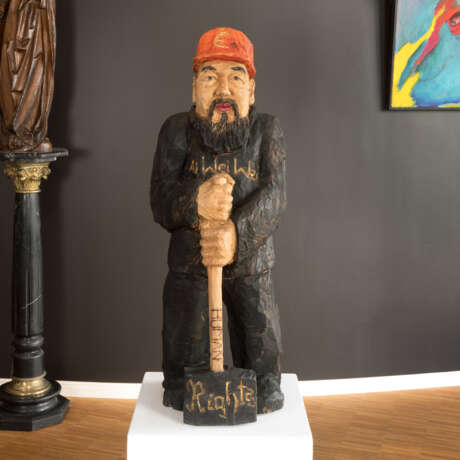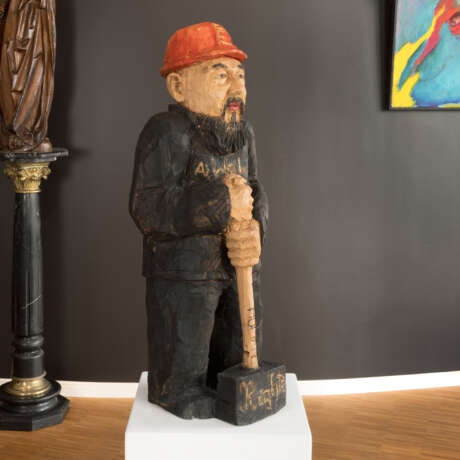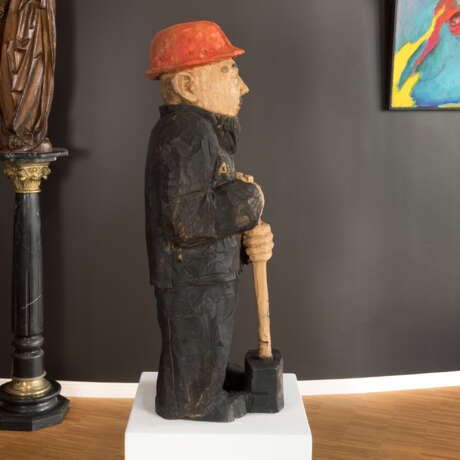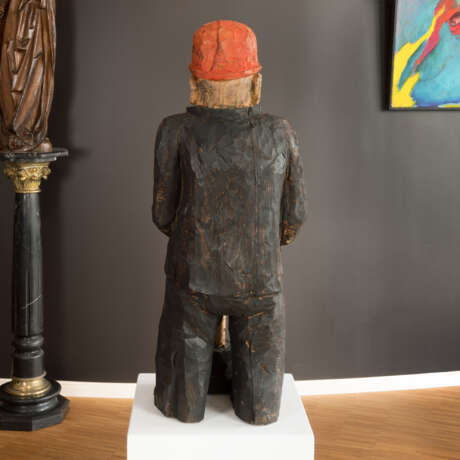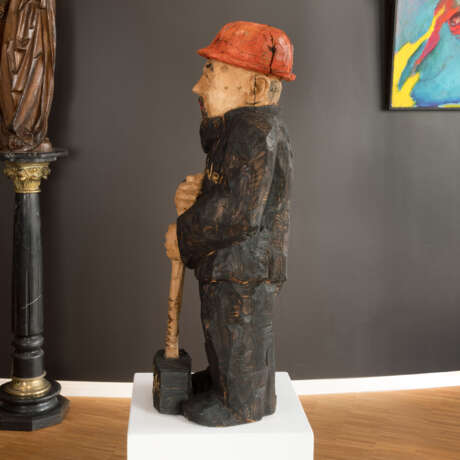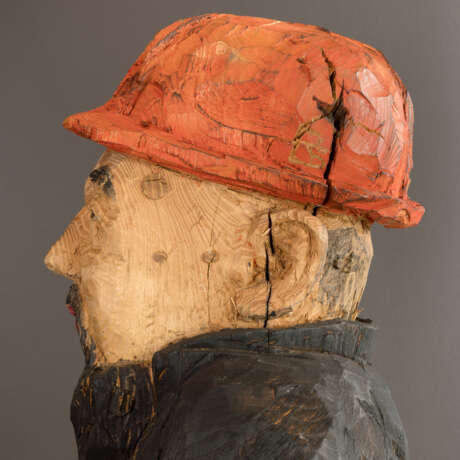ID 1066904
Lot 107 | Roger Löcherbach (1963 Kirchen/Westerwald)
Estimate value
€ 1 800 – 2 200
Roger Löcherbach (1963 Kirchen/Westerwald)
'Ai Weiwei Human Rights', Robinienholz geschnitzt, polychrom bemalt und geflemmt, 110 cm x 37 cm x 41 cm Objektmaß, monogrammiert, partiell kleine Holzabplatzer, Provenienz: Kunstraum, Essen, Kopie des Kaufbelegs von 2013 anbei
Die Skulptur, die sich auf den chinesischen Künstler und Architekten Ai Wei Wei bezieht, steht für den gesellschaftspolitischen und humanitären Einsatz des Künstlers. Ai Wei Wei konnte mit seinen Kunstaktionen als Botschafter der chinesischen Kultur und als scharfer Kritiker des derzeitigen politischen Systems, die Aufmerksamkeit der Welt auf bestehende politische Missstände lenken. Er wurde deshalb von der chinesischen Regierung schikaniert und inhaftiert. Er emigrierte nach Deutschland und lebt heute in Portugal. Auch viele neuere Kunstaktionen von ihm klagen Ungerechtigkeiten, Verfolgungen und Verletzung der Menschenrechte in aller Welt an. Seine Waffe dagegen sind seine Kunstaktionen, seine Botschaft die Menschenrechte. Er zeigt, dass es der Kunst durchaus gelingen kann ungerechte Systeme herauszufordern und in Erklärungsnot zu bringen und damit auch Verhaltensänderungen zu erzwingen. Die Skulptur ist unterlebensgroß und zeigt damit die eigentlich schwache Position der Kunst gegenüber Systemen der Gewalt, die gerne mit Monumentalität den einzelnen Menschen einschüchtern. Ai Wei Wei ist als Bauarbeiter dargestellt, was einerseits auf seinen Beruf als Baumeister verweist, ihn aber auch als pragmatischen Veränderer der Gesellschaft zeigt. Seine Waffe, ein im Verhältnis zur Figurendarstellung übergroßer Hammer mit der Aufschrift "Human Rights", ist Symbol dafür, dass die Einforderung der Menschenrechte eine mächtige Waffe im Kampf für eine freie, gerechte und lebenswerte Welt sein kann.
Roger Löcherbach (1963 Kirchen/Westerwald)
'Ai Weiwei Human Rights', carved robinia wood, polychrome painted and flemmed, 110 cm x 37 cm x 41 cm object dimensions, monogrammed, partially small wood chips, provenance: Kunstraum, Essen, copy of purchase receipt enclosed (2013)
The sculpture, which refers to the Chinese artist and architect Ai Wei Wei, stands for the socio-political and humanitarian commitment of the artist. With his art actions as an ambassador of Chinese culture and as a sharp critic of the current political system, Ai Wei Wei was able to draw the world's attention to existing political grievances. He was therefore harassed and imprisoned by the Chinese government. He emigrated to Germany and now lives in Portugal. Many of his more recent art actions also denounce injustice, persecution and the violation of human rights all over the world. His weapon against this is his art actions, his message is human rights. It shows that art can indeed succeed in challenging unjust systems and putting them in need of explanation, thus also forcing changes in behaviour. The sculpture is smaller than life-size and thus shows the actually weak position of art vis-à-vis systems of violence that like to intimidate individuals with monumentality. Ai Wei Wei is depicted as a construction worker, which on the one hand refers to his profession as a builder, but also shows him as a pragmatic change-maker of society. His weapon, a hammer with the inscription ''Human Rights'', which is oversized in relation to the figure, is a symbol that the demand for human rights can be a powerful weapon in the struggle for a free, just and liveable world.
| Artist: | Roger Löcherbach (1963) |
|---|---|
| Auction house category: | Figures and sculptures |
| Artist: | Roger Löcherbach (1963) |
|---|---|
| Auction house category: | Figures and sculptures |
| Address of auction |
WETTMANN | Auktionshaus an der Ruhr Friedrichstraße 67-67a 45468 Mülheim an der Ruhr Germany | ||||||||||||||
|---|---|---|---|---|---|---|---|---|---|---|---|---|---|---|---|
| Preview |
| ||||||||||||||
| Phone | +49 (0)208 3059081 | ||||||||||||||
| Fax | +49 (0)208 4391735 | ||||||||||||||
| Buyer Premium | 30% | ||||||||||||||
| Conditions of purchase | Conditions of purchase | ||||||||||||||
| Business hours | Business hours
|
